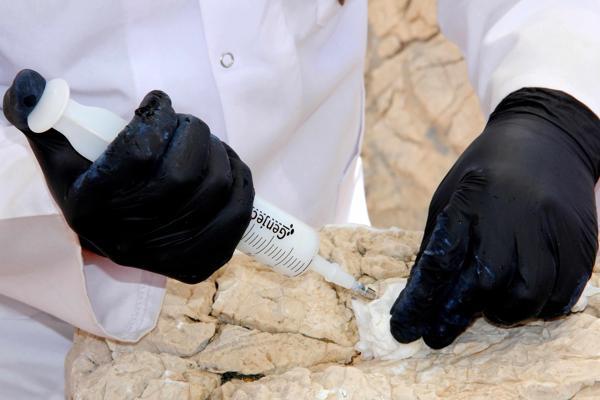‘Nano lime’ protects statues on Nemrut
ADIYAMAN


The tiny cracks on the large stone statues at Mount Nemrut in the southeastern province of Adıyaman were filled with “nano lime” with syringes last year for their protection and officials announced that it worked.
Last year, the lime filling was prepared using nano technology for the cracks of the statues, which have been weathered due to natural conditions for centuries on Mount Nemrut, which is on UNESCO's World Cultural Heritage list since 1987.
Gaziantep Restoration and Conservation Regional Laboratory Director Ayşe Ebru Çorbaşı and the restorers filled the body and sandstone of the Eagle statue on the East terrace, and the feet and sandstone of Herakles, the son of Zeus, on the West terrace.
After waiting one-year, the examinations show that nano lime protected the sculptures. Now it is planned to carry out the same work on other statues.
The joint project, conducted with the Culture and Tourism Ministry and Mideast Technical University (ODTÜ), aims to hold the stone heads standing in an upright posture for 2,000 more years.
“During these examinations, they observed that no rain or snow water affected the statues and that their work was very positive. They sent us a report about this. It was reported that the nano lime can be used for the protection of the statues. As a result of these reports, restoration and conservation works will be continued,” said Adıyaman Museum Director Mehmet Alkan.
Mount Nemrut is a 2,134-meter-high mountain notable for the Hierotheseion (temple-tomb and house of the gods) built by the late Hellenistic King Antiochos I of Commagene (69-34 B.C.) as a monument to himself.
With a diameter of 145 meters, the 50-meter-high funerary mound of stone chips is surrounded on three sides by terraces to the east, west and north.
Giant heads, weighing in at 6 tons are a full 10 meters tall, built in the look-out over an incredible sunrise and sunset every day.
